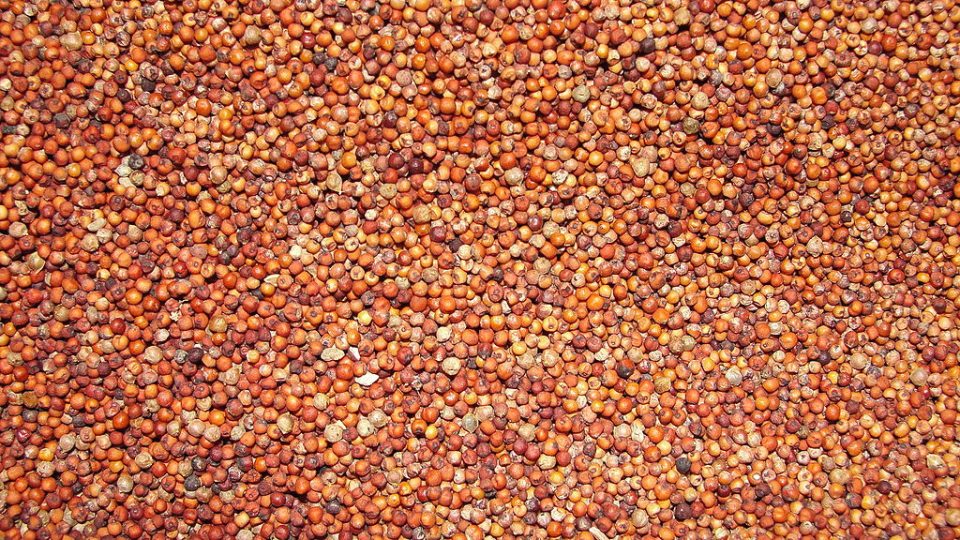
Ragi revolution in Jharkhand's Gumla district is a Harvard Business School case study

A Jharkhand district known for its extreme poverty and Naxalite insurgency is now witnessing a silent revolution centering around snacks made from a type of millet which can help prevent malnutrition.
The new agro-industry coming up in this backwoods district is an initiative of a young bureaucrat Sushant Gaurav who says he would like Gumla to be the Ragi capital of eastern India.
Tucked away some 100 km from state capital Ranchi, his work in Gumla has been selected for the Prime Minister’s Awards for Excellence in Public Administration that recognises exemplary work by civil servants across the country.
Also Read: Millets can help tackle challenges of food security: PM Modi
Previously Gumla’s economy revolved around rain-fed agriculture with the cultivation of one crop rice.
Ragi cultivation was initiated with procurement of high-quality seeds through the National Seed Corporation, deputy commissioner Sushant Gaurav told PTI in an interview.
“From an initial cultivation of Ragi in 1,600 acres, it was increased to 3,600 acres. Net output increased 300 per cent … What helped in the success story is procurement by Sakhi Mandal Samuh (women self-help group).
We established a Ragi processing centre which is the first in Jharkhand. Ragi Laddus, Bhujia snacks and flour are being produced which help battle malnutrition and anaemia (as it is rich in protein, calcium and iron),” Gaurav said.
Also Read: Varanasi’s Kashi Vishwanath temple to offer prasad made from millets
Gaurav will receive the award on Friday in the holistic development through aspirational district programme overall progress with special focus on saturation approach category at Vigyan Bhawan, New Delhi.
This is the first time that a Jharkhand district has been selected for the award.
Exuding confidence, Gaurav said “We will transform this aspirational district to a transformational and inspirational one.”
The deputy commissioner said, “The success story of the production, procurement and processing of Ragi spread and more and more people have come forward to cultivate the grain. It is on 26,000 acres (an increase of ten times) of land now instead of rice and will be 30,000 acres by the month end.
People gave proposals for Ragi cultivation …I view this change in just two years as the success which I wanted. We will make Gumla the Ragi capital of the whole Eastern area in a year or so and strive for the success of agriculture from farm to fork.”
Also Read: What India can learn from Odisha’s cultivation of hardy, nutritious millets
Ragi processing centres owned and operated by only women ensure a daily production of 1 tonne of Ragi flour, 300 packets of Ragi Laddus and 200 packets of Ragi snacks under the Brand Johar Ragi.
The laddus made of Ragi are being provided to children to fight malnutrition besides saag and vegetables from identified 52 types – mainly moringa powder and curry leaves – in mid-day meals to boost nutrition at a very affordable cost, the DC said.
Avinash Kumar, Mahatma Gandhi National Fellow, Ministry of Skill Development, Government of India, who made a case study presentation at Harvard Business School on behalf of the deputy commissioner said the institute is doing a case study on the Gumla model that will be circulated among international business schools and will be used for training bureaucrats.
The deputy commissioner said a door-to-door survey was done among school children, and lactating mothers and they were identified for severe, moderate and medium anaemia and malnutrition for which preventive and curative measures were taken.
Also Read: Scientists working to increase shelf life of millets-based products, validate health benefits
“A multi-pronged approach was adopted to combat anaemia, aiming to address and identify it at a very early stage among pregnant and lactating mothers and adolescents.
Over 400 model anganwadi centres were set up equipped with digital haemoglobin-meters, height growth charts, innovative blue MTC (malnutrition treatment card) and follow-up cards, the deputy commissioner said.
“Fitness of children has improved. We have ensured indoor stadiums at all three subdivisions where equipment is free besides open gyms….You can see women doing gym in sarees, he said.
Emphasis was also given to education – many schools got IT facilities, he said.
Also Read: Mann Ki Baat: Modi touches on tribals, traditional music, millets
The district where 85 per cent of the population has agriculture as the primary source of livelihood with over 90 per cent of small and marginal farmers, solar lift systems, drip irrigations, and renovation of ponds have also helped increase the proportion of irrigated land, officials said.
The administration has also increased acreage under mango cultivation to 9,492 acres, promoted organic farming in 5,000 acres besides organising pilot projects for dragon fruit, pear and strawberry cultivation,
Recognising the importance of millets or nutri-cereals, and creating a domestic and global demand along with providing nutritious food to the people, India spearheaded the United Nations General Assembly (UNGA) resolution for declaring the year 2023 as International Year of Millets.
The proposal by India was supported by 72 countries.
Millet is a common term to categorise small-seeded grasses that are often termed nutri-cereals or dryland-cereals and includes Sorghum (Jowar), Pearl Millet (Bajra), Finger Millet (Ragi), Little Millet (Kutki), Foxtail Millet (Kakun), Proso Millet (Cheena), Barnyard Millet (Sawa), and Kodo Millet (Kodon).
(With agency inputs)


